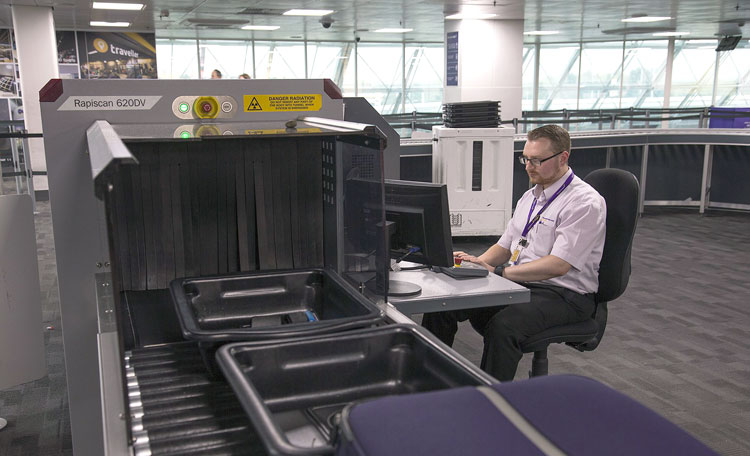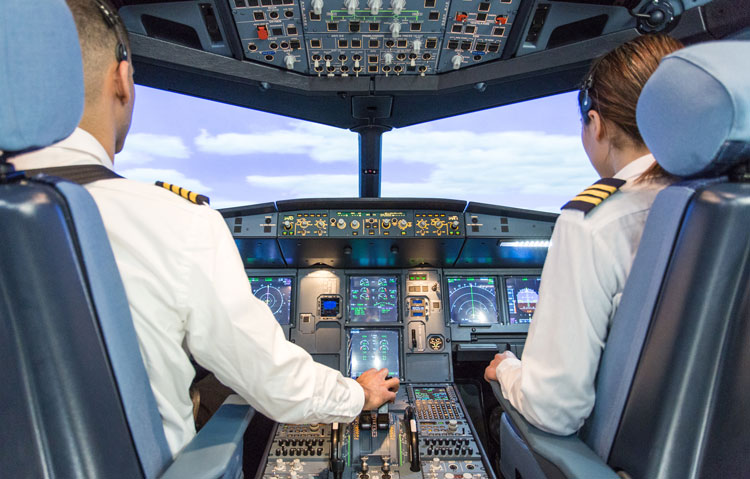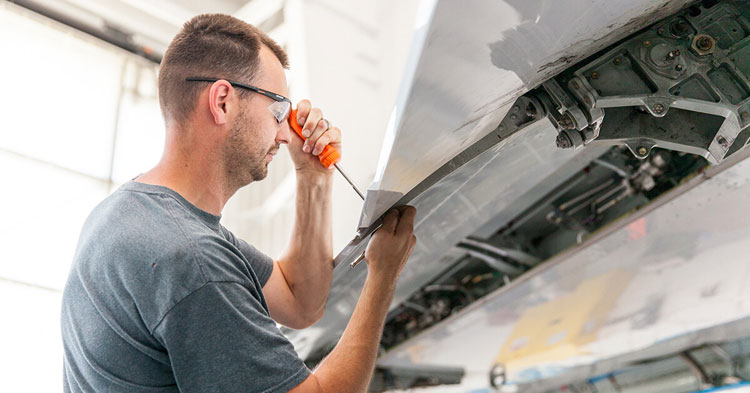VBACE 2020
 DAY 2
DAY 2
VBACE 2020 highlights workforce concerns and changes
From the ground support staff to the maintenance professional, working in isolation to working from home, education sessions at VBACE proactively discussed about the transitions in the workforce post COVID-19.

Much like most other industries, business aviation companies also encountered grave and unique challenges in this pandemic years which led to unrest in quite a few ways. The decrease of activity, in turn led to a deduction is staff numbers, changes in the structures and the ways of working and many other factors.
VBACE 2020 witnessed an education session on the "Business Aviation Security: Changing Approaches to Protecting Your People and Company," which was hosted by Doug Carr NBAA's Vice President of Regulatory and International Affairs. Clay Hendon, Senior Director of Operations for Twenty20 Solutions; Greg Kulis, past Chairman and current member of the NBAA Security Council and Eric Moilanen, President of Premier Corporate Security and Chairman of the NBAA Security Council were also a part of the panel.
During the session, the experts touched upon the multi-facet variations in the working dynamics. "Basic security processes - simple things that are routine to us like locks and alarms are often verified by multiple people - now might be verified by someone working alone. It is now essential to know who is in the facility and when," said Kulis.
While Mollanen added, "It's almost a perfect storm of increased stressors that [can] create these situations and decreased observation from our peer groups." He further explained about the civil unrest, particularly the rapid development localised unrest, which is a much broader threat in 2020 than in the past. "Civil unrest, which was previously considered a concern for third-world countries, is now a significant concern in many U.S. cities."
During the session, the experts touched upon the multi-facet variations in the working dynamics. "Basic security processes - simple things that are routine to us like locks and alarms are often verified by multiple people - now might be verified by someone working alone. It is now essential to know who is in the facility and when," said Greg Kulis, past Chairman and current member of the NBAA Security Council.
The panelists also suggested implementation of "hot zone" best practices on every trip.
Kulis' organisation for instance, researches destination cities and chooses accommodations for passengers and crewmembers that mitigate the risk of disruptions.
Hendon highlighted that the ground transportation must also be a consideration in such cases."Every flight is going to start and end with an arrival to and from a [ground] vehicle. You can't skip over that part [in planning]. Follow a process each time to verify those things are being considered," said Hendon.

They also acknowledged that remote work, now commonplace due to efforts to mitigate the risk of COVID-19 transmission, has increased cybersecurity vulnerabilities. Personal devices are used heavily and home networks are often not as controlled as an organisation's networks, leading to increased exposure.
The discussion further nudged the companies to invest in the right equipment for employees to work from home, if resources allow such an investment. Employees working from home should take measures to secure their devices, separate work tasks from personal devices or use a VPN or appropriate firewall to secure their organization's sensitive information.
Crew Management in the New Reality
In the COVID-19 era, the need for inflight connectivity has become more important than ever before. More than ever before, business executives today are primarily using "office in the sky", conducting virtual meetings during flight, leading remote workforces, and even holding in-person meetings on the aircraft while sitting on the tarmac to help ensure personal safety. This highlights that the need for faster speeds, more personal services, and future-proof solutions is likely to witness a surge in the years to come. While the connectivity seems to be helping business aviation operators, passengers and crew deal with the pandemic, at the same time driving digital transformation that will change the way you think about the entire inflight experience.
However, despite adaptations and innovations, the pandemic has driven shocks to the aviation labor market, and the business aviation industry still battles the long-term pilot shortage issues, as highlighted by the panelists for during a VBACE session on 'Crew Management in the New Reality'.
The discussion pivoted around a recent CAE study that determined more than 45,000 business aircraft pilots will be needed by 2029 - 41,000 just to offset retirements and attrition, with growth required to crew a projected 3,600 additional active aircraft.
The discussion pivoted around a recent CAE study that determined more than 45,000 business aircraft pilots will be needed by 2029 - 41,000 just to offset retirements and attrition, with growth required to crew a projected 3,600 additional active aircraft.
"There's little evidence to show that the fundamentals of the pilot supply issue have shifted radically. While immediate pressures may have changed, underlying pain points haven't disappeared," said Keith Butler, Managing Director of CAE Parc Aviation.
The experts also underlined during the session that a key reason the outlook for a pilot shortage remains even after a swollen labor pool due to large numbers of virus-related layoffs and furloughs is that a typically high number of pilots are leaving the cockpit altogether.
Through planned retirements, early retirements and individuals choosing a different career path, 27,500 pilots left aviation in 2020 - nearly three times the numbers seen in a typical year, according to Butler.With another 12,000 projected to leave next year, these unplanned departures could drive a shortage sooner than most people think. However, business aviation has an opportunity to use the current flying environment to address severe challenges related to long-term staffing, said Simon Azar, Head of Strategy and Marketing for civil aviation with CAE. "The industry has unfortunately slowed down tremendously, but that also gives it a shot at catching up to the shortage we have and addressing it to a certain extent."
The discussion also pointed out that the uneven pace of recovery between business aviation and other segments of the industry presents short-term opportunities to find talented professionals, while also acknowledging that meeting long-term demand will still require finding and retaining new talent.
Role of the maintenance professional
In a VBACE session, "Beyond the A&P Ticket: The Expanded Role of Today's Modern Business Aviation Maintenance Professional," NBAA gathered some of the industry's leaders to discuss the skills today's technicians need to become great managers. The session acknowledged that the role of a maintenance leader has changed dramatically in the past decade and the knowledge required by directors of maintenance now extends far beyond technical expertise.
"Maintainers today are not just rising to the level of a director of maintenance but to director of aviation and beyond because the maintenance community is developing and growing some of the best leaders in our industry. This has been achieved because as a community we have adapted and embraced the soft skills that allow us to manage and appreciate the individuals and teams that we work with," said NBAA Director, Technical Operations and webinar moderator Stewart D'Leon.

Fern Campos, Director of Maintenance for the Disney Aviation Group highlighted how good leadership is a skill to be acquired and needs efforts, "People are not born with the innate qualities to be a good leader and when you go to A&P school chances are that they won't talk about leadership. So, you must study leadership like any other skill."
Given the changing scenario and the heightened concerns around safety, the panelists also pointed out how maintenance leaders can also enhance safety by ensuring every team member is valued. Shannon Hotchkin, Director of Maintenance at Nike Flight said, "Leveraging the knowledge of everyone on the team, bringing everyone into the conversation is the best thing to do whenever you are talking about risk. By being a democratic leader, you can talk about an issue, gather ideas and discuss those ideas to make the most informed decision you can."
"Maintainers today are not just rising to the level of a director of maintenance but to director of aviation and beyond because the maintenance community is developing and growing some of the best leaders in our industry," said NBAA Director, Technical Operations and webinar moderator Stewart D'Leon.
An important aspect of a maintenance professional apart from leadership was highlighted as a familiarity and openness to technology which is an instrument of change, simultaneously fulfilling needs. "Technology can also equip a leader with the tools to improve safety, although managers must understand that a poorly designed tool can be counterproductive. You need to remove as many roadblocks as possible," noted Kevin Flynn, Director, Aviation Maintenance at AbbVie.
Flynn also explained that today's maintenance leaders must appreciate their role beyond the maintenance facility. "In many companies, the director of maintenance is now considered a corporate level officer. That means that you must be a technical expert at one level but also understand that the corporation sees you as a people manager."
Encouraging the audience towards a career in maintenance, Andrew Kiehl, Vice President, Fleet Maintenance for Executive Jet Management said, "Ultimately, a good leader creates an environment where the team can excel. One of the most rewarding things about this career is that everyone has a passion for aviation. When you create a workplace where they feel like they are contributing every day and where they feel like they are supported every day, and if you put yourself out there and make yourself available to your team, it will pay dividends."





